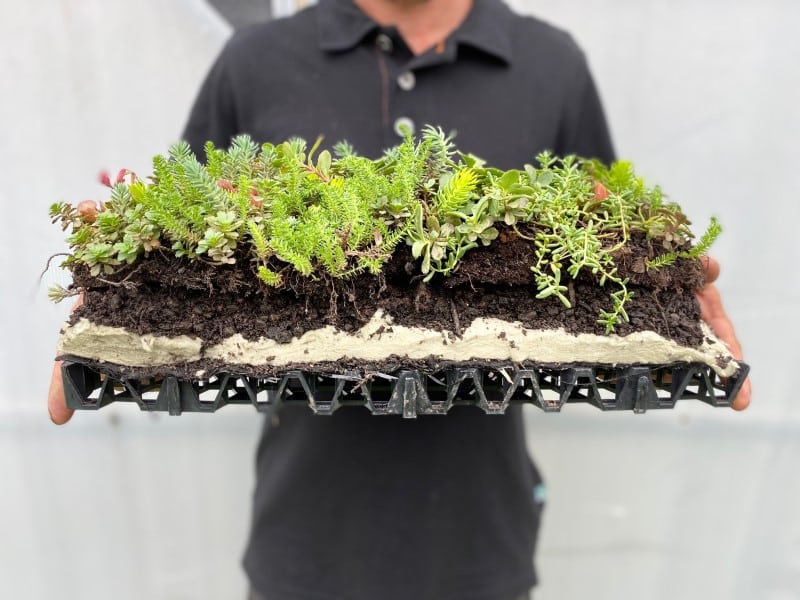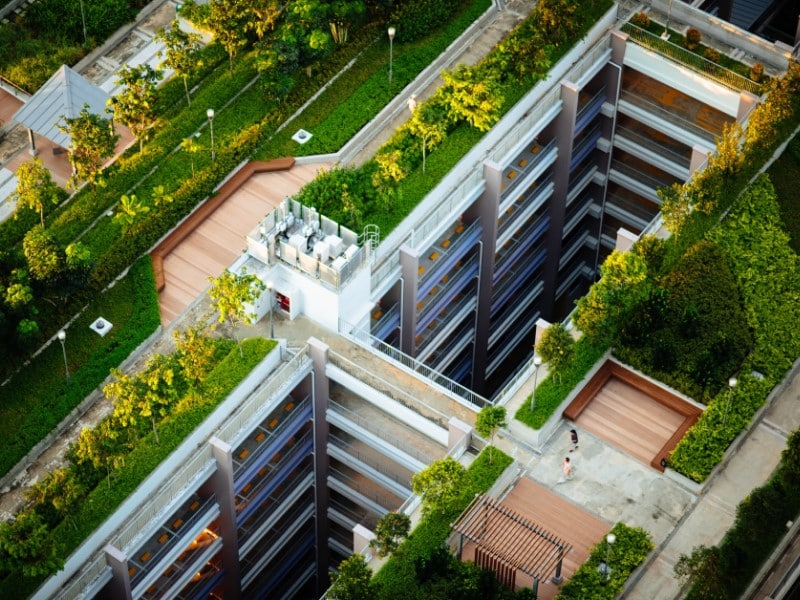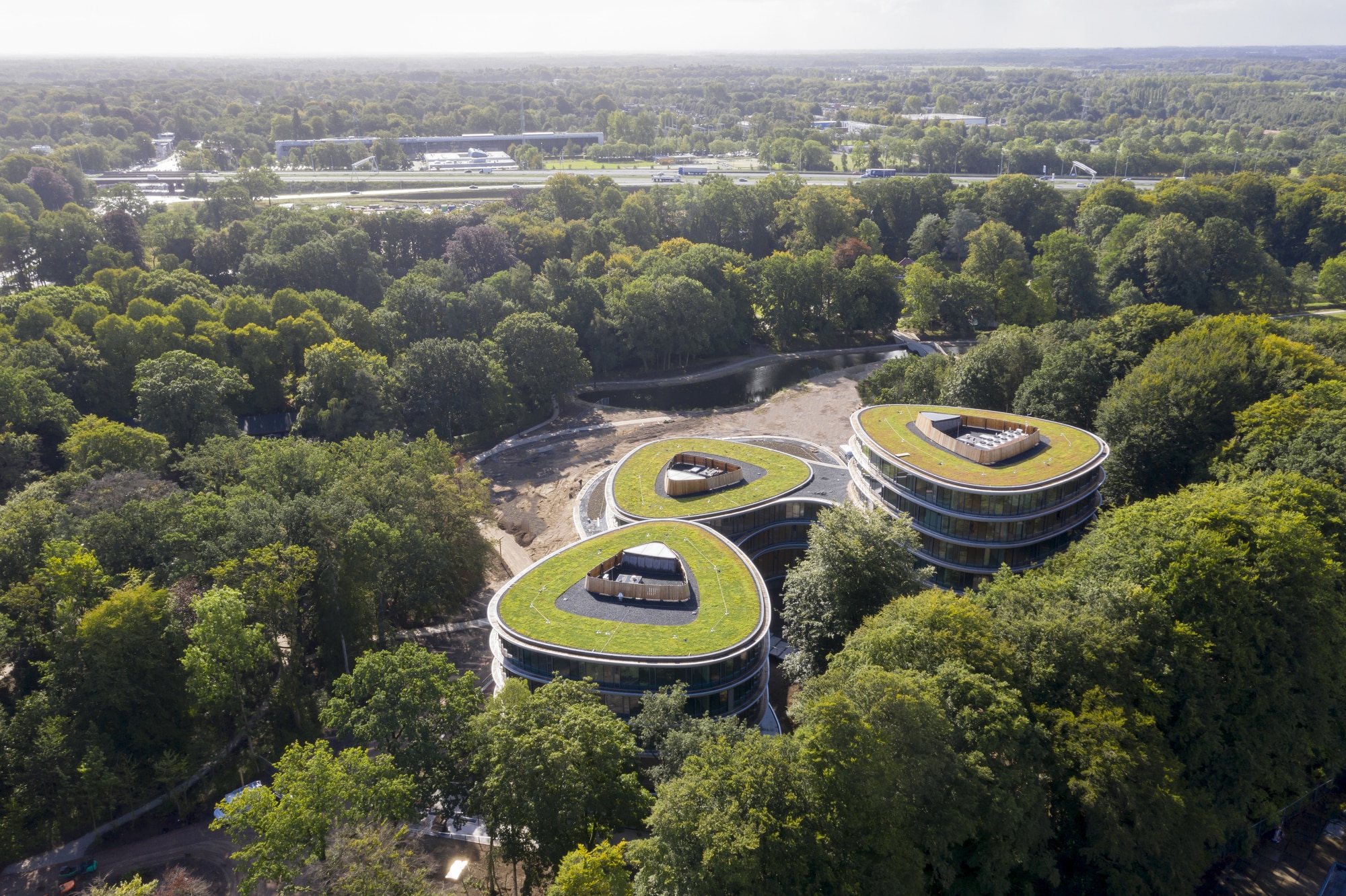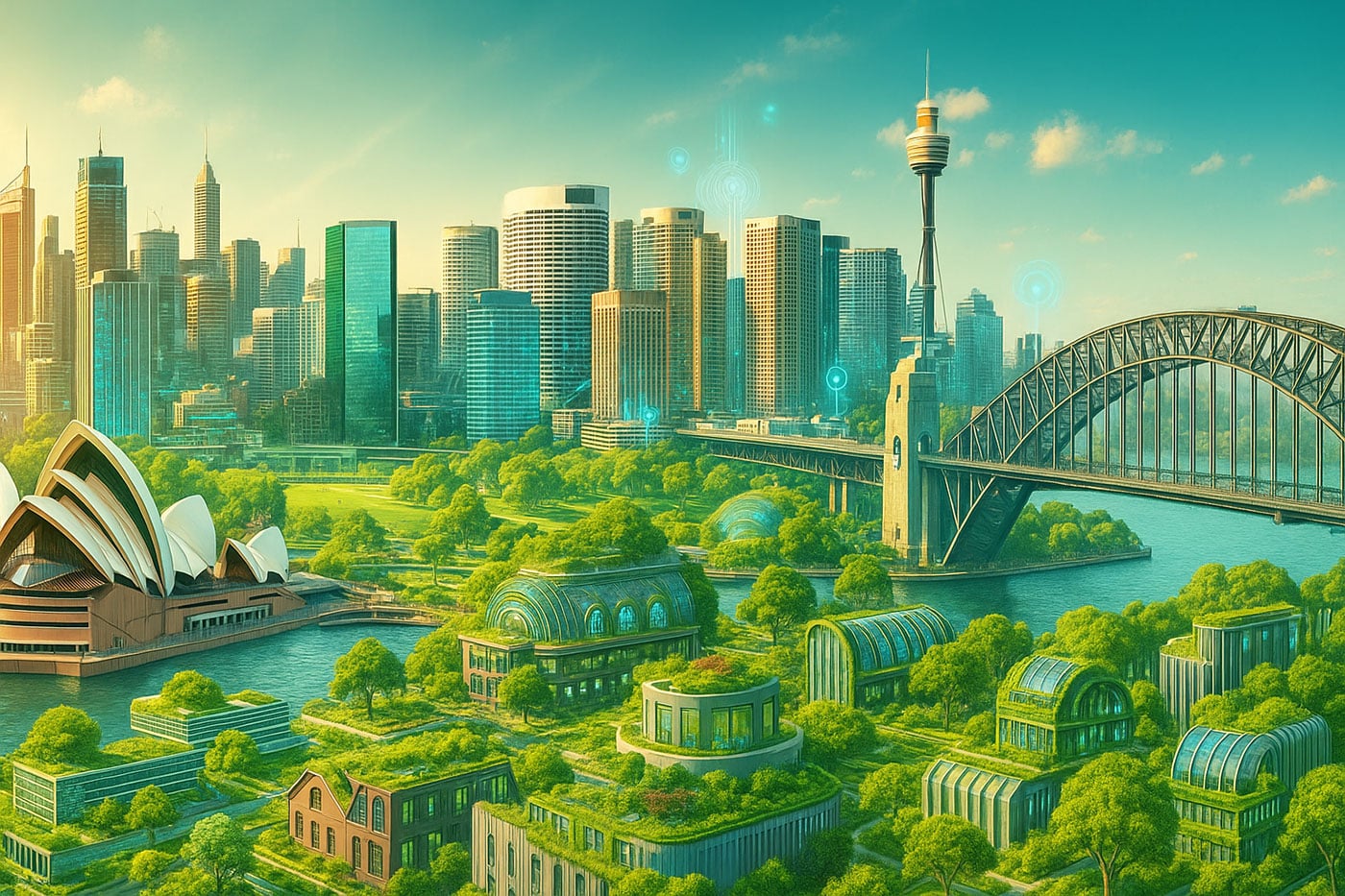The sustainable, economical, lightweight solution to include greenery on buildings.
Cities face a major challenge when it comes to climate adaptation. We often see that there is little to no space to add more greenery in urbanised areas. One of the solutions for this, is the creation of more green roofs. While the first association with a green roof might be a rooftop garden, there are various kinds of systems and vegetation possible. In this article, we explain the differences and introduce the lightweight green roof.
Differences between extensive and intensive green roofs
On an extensive roof, the vegetation is often more or less able to further develop and maintain itself. The application of a lightweight extensive green roof system is very common on (existing) roofs which creates an instant green environment. An intensive roof can be compared to a normal garden. This is why an intensive roof is also known as a rooftop garden or garden roof. The biggest difference is the thickness of the structure, its weight and the amount of maintenance the plants require.
Extensive green roofs
Extensive roofs are best placed in locations where you do not often walk, only for possible maintenance of the greenery or roof itself. Other than giving a beautiful colourful view, they are designed in such a way that they can efficiently store and drain water and provide thermal insulation without having the roof bear too much weight. An extensive green roof usually consists of three layers: (1) a vegetation layer – also known as the Sedum blanket, (2) a substrate layer and (3) a drainage layer. The system structure is between 11 to 16 cm thick. This depends upon the plants that are used. Because of the relatively thin substrate layer needed and the amount of water the drainage layer can store, Sedums are great plants to use for green roofs.
These succulent species have shallow roots and a low moisture requirement. Grasses, herbs and flowers can also be used in an extensive green roof. Keeping the variety of plant species low makes green roof maintenance simple and ensures that all plants have a similar moisture requirement. The Sempergreen roofs are supplied with 95% coverage from day one, because the vegetation blankets are pre-grown. This makes the system easy to install and suitable for an existing roof.
Dependent on the type of extensive green roof, the saturated weight varies from 85 kg/m² to 220 kg/m². The lightweight solution of 85 kg/m² is only possible with Sedum vegetation. A green roof with a weight of 220 kg/m² is composed of a combination of Sedum, herbs or host plants, which need more soil, therefore increasing the weight in kg/m². All extensive green roof types are fairly easy to install, require little maintenance and put less weight on the support structure.


Intensive green roofs
The vegetation of an intensive roof consist of shrubs, trees and flowers, often in combination with lower ground-covering plants. Every so often, a park-like environment is imitated. Walking paths between the green spaces and seating areas where people can dine or work, are frequently used. The soil layer used on an intensive green roof is much deeper than on an extensive roof. This means that larger plants can be used. However, this vegetation requires intensive maintenance such as frequent watering, pruning, fertilization and weeding, just as in an ordinary garden. The thickness of an intensive green roof system ranges from 15 cm to as much as 150 cm and can easily weigh as much as 300 to more than 1500 kg/m². To bear the weight, an expensive custom support structure is often required. This is to avoid the risk of overloading the roof construction.


So what are the main differences?
| Extensive green roof | Intensive green roof | |
| Installation | Easy installation | Installation only through a professional |
| Costs | Low | High (structure, design and installation) |
| Maintenance | Low in maintenance | High in maintenance |
| Weight | Lightweight | High roof load, Requires (almost always) an expensive custo support structure |
| Thickness | Thickness of 11 to 16 cm | Thickness of 15 to 150 cm |
| Plant diversity | Low diversity in plants (sedum and some grasses) | High diversity in plants |
| Water | Relatively low water requirement | Relatively high water requirement |
| Construction | Suitable for existing buildings | Must be taken into account during construction |



